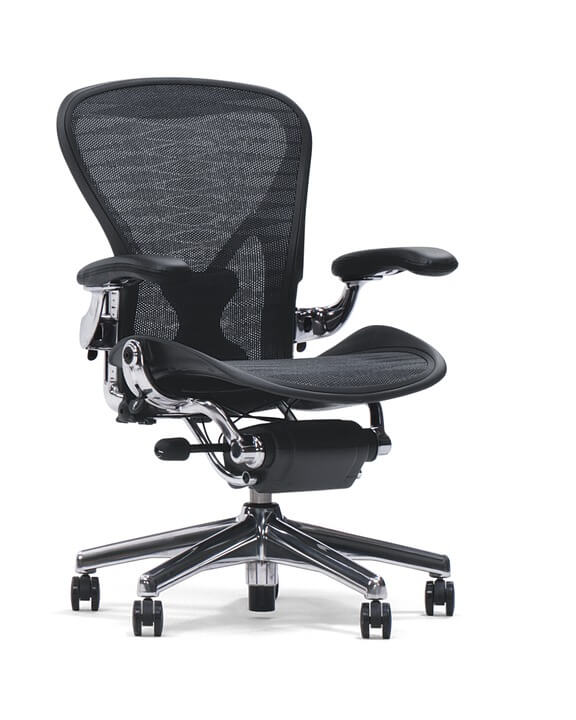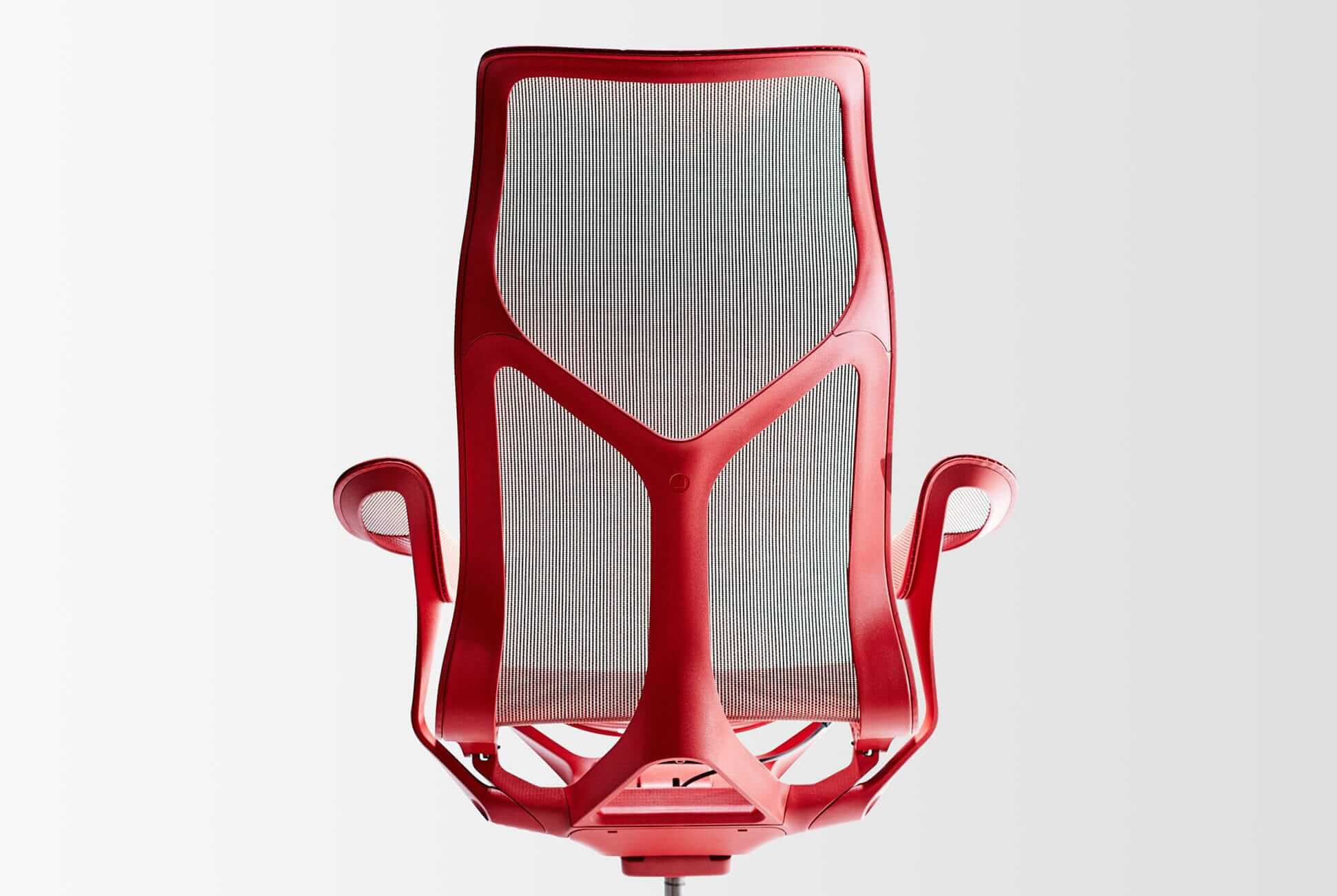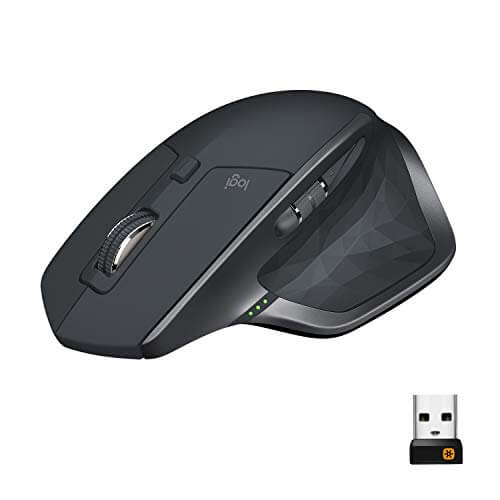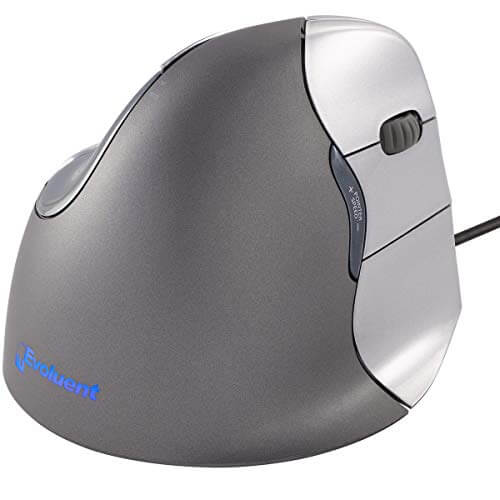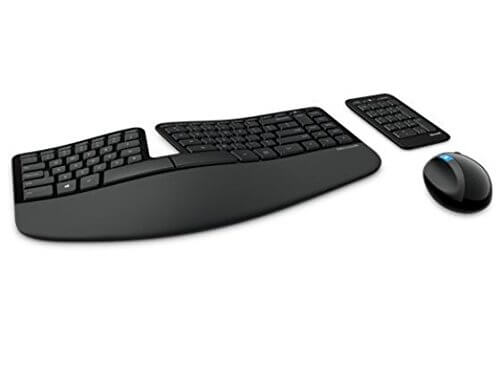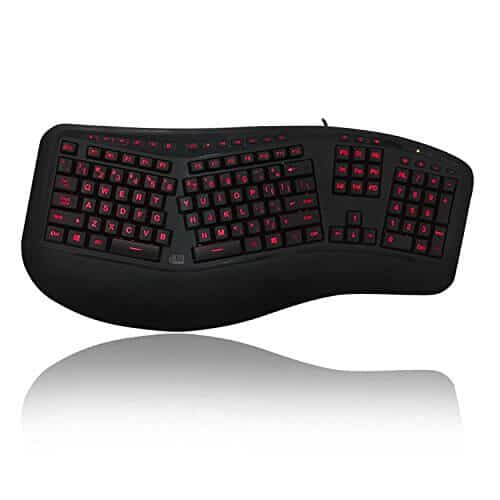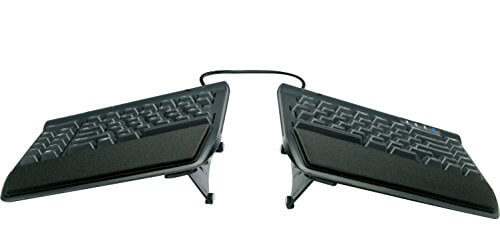If you haven’t read our other articles about the importance of ergonomics or other general tips to improve your ergonomic behaviors, be sure to check those out. They provide helpful information about how ergonomics can help you avoid injury and make work more comfortable and sustainable. Not all solutions require buying a new chair or computer mouse, as there are some behaviors that can make a real difference.
Nevertheless, there are definitely lots of great products out there that can improve your home workspace. Ergonomic computer mice, chairs, keyboards, lights, and even monitors are available. There are even some simple software products that can help improve the general comfort of your home office.
In this article we will review some of our preferred products in chairs, mice, and keyboards, including discussing their strengths and weaknesses and what general benefit they provide. If you understand why home ergonomics is important, reading about the features and benefits of these products should make their benefit clear.
Ergonomic Chairs
Finding a good chair is the best place to start for several reasons. One, the goal of good ergonomics is to attain what OSHA calls a neutral body position. This is where all of your joints are in alignment and the potential for stress is vastly reduced. As you can see from the OSHA images, that all starts with how you are positioned when you sit down!
Achieving that position is no simple task, however. There is no one proper set up for everyone, there are a whole host of adjustments that need to be made for each individual.
We have an excellent article that goes into what you should look for in a good ergonomic chair. We will review the particular attributes only briefly here.
- Lumbar support – basically back support, there should be a minimum level of support, it should be adjustable on multiple axes, and it should be adjustable asymmetrically.
- Seat Recline – How does your chair react when you lean and move around? Single point pivot is fine, synchronous tilt is better, and 3-point-pivot is best.
- Seat pan and Seat Height – The best models have a little bit of adjustment for each of these
- Armrests – Is there good padding, and are they fully adjustable (front-back, side-side, pivot)?
- Extras – How many wheels does it have (more wheels = more stable), is there a headrest, how comfortable overall are the materials used?
Good chairs have most of these attributes, great chairs have all of them. It can seem like anyone of them may not be a big deal, but remember, repetitive stress disorders can become incurable and start from small beginnings.
Using the information from our buying guide, let’s discuss some chairs in particular that we love.
Aeron chair
This chair was an immediate hit when it came to the market, and it’s not hard to see why. Light, stable, fully adjustable, this chair was designed to work with, not against, the human body. Your thighs, back, and pelvis will all be in alignment, and your joints will have a free movement without strain. The breathable fabric means you never feel constrained and breezy as you work.
Some people have encountered issues with it being a little too loose, such as having the arms swinging out when they don’t want them too or even drop down unexpectedly. Furthermore, because the chair is made out of lightweight plastics, while it is durable, some consumers have complained about broken parts upon arrival. However, with the warranty and excellent customer service that Herman Miller provides, this shouldn’t be too much of a problem.
Mirra 2 Chair
The number of options available when buying this chair makes it a real winner. Lumbar support, arm rests, even the seat position, all this and more can be changed via the ten possible different adjustment systems. Because it was designed to be a spiritual successor to the Aeron chair, it is also lightweight and breathable, and designed to support excellent posture.
However, with increased moving parts for increased controls comes increased complexity and greater potential for breakage. Some users have a tough time getting comfortably dialed in, and they sometimes complain about experiencing squeaky movements faster than expected. It also does not have angle control on the seat, and very tall users may have some difficulty.
Cosm Chair
The Cosm chair was designed to be an even more streamlined model of ergonomic chairs. Depending on the model you get, it may not even come with arm rests, but we recommend getting one that does. The light mesh is excellent, the over simplicity of the design has great elegance, and the spinal support works well with the overall adaptability of its movements.
Having said that, it may be too streamlined. It lacks some important adjustment features, and the arm rests don’t work comfortably for everyone. It’s good that the seat moves with you so well, but if it doesn’t feel comfortable at the start, there isn’t much you can do to change that.
Computer Mice
Once you are settled in your new ergonomic office chair, let’s talk about what kind of mice you should be looking at.
Basically, you want a mouse that
- Moves easily on a smooth track function
- Can be adjusted in sensitivity to comfortably match your arm movements
- Is balanced in weight to give some resistance without being enough to strain your arm
- Has a lengthy enough cable to allow freedom of movement, if any cable at all
- Is designed to work with the form and function of the human hand, not against it
With these features in mind, here are a few solid options for your home office. While the price tags on these are almost twice what a basic mouse will cost, they are all less than $100 and your wrists will definitely thank you.
Logitech MX Master 2S Wireless
This mouse has a more traditional design, but it comes with enough advancements, refinements, and improvements that it’s a serious upgrade to any basic mouse on the market. The thumb rest is sizeable and comfortable, and the overall padding does a great job of matching the natural shape of your hand. The range of sensitivity options can have this mouse moving the cursor all over your computer screen with only minor movements if you wish.
Though it works like a traditional mouse, the wrist position it helps you maintain is pleasantly neutral. The weight is well balanced, and its battery life is quite good. The extra buttons on the side can be programmed to a variety of simple tasks, making your work processes even more efficient than normal.
Evoluent Vertical Mouse
If you were wondering why the previous model was described as traditional, it’s because this line of mice from Evoluent has shown that a transformed position may be the way of the future. Though it takes some getting used to with its size and shifted button positions, the vertical mouse puts your wrist in a great position for maintaining wrist health.
With the choice between a slim model or a chunkier version depending on the most comfortable position for your thumb, the handshake grip claims to avoid forearm twisting. Some users have even claimed it has helped reduce existing wrist pain. With a free 30-day trial from Evoluent, what do you have to lose? It comes with wireless or wired options.
Logitech MX Vertical
Logitech has designed a mouse that seems to sit somewhere in between a more traditional mouse and the vertical option. While it maintains the same vertical position that puts the thumb opposite the rest of the hand, it does so with a curve of over 45 degrees that still puts the rest of your fingers in a somewhat top-down position.
The customizable sensitivity is honed to reduce wrist strain in concert with the handshake position. With Logitech’s reputation for designing gaming mice, you can believe that they have a quality product here. The rubber grips also support smooth cooperation with your movements.
Ergonomic Keyboards
Now that you are positioned in a comfortable chair with a great mouse, let’s talk about the device that was probably most people’s first experience with ergonomic products, keyboards. These have been around for ages, but they have a surprising amount of variety.
Issues you want to consider when buying an ergonomic keyboard
- Size, texture, and resistance of the keys themselves
- Quality of the wrist cushion
- The positioning of the keys that works with the natural curve of fingers
- Wireless vs wired
- Any adjustable options?
- Backlighting (can be great for reducing eye strain)
- Weight (if you are planning on carrying this to multiple remote locations)
Please note, if you decide not to buy an ergonomic keyboard, please at least consider getting a wrist cushion. While this isn’t a perfect solution, this does get you closer to having your wrists in a neutral position. With that in mind, here are a few ergonomic keyboards worth considering.
Microsoft Sculpt Ergonomic Desktop
Part of a set with a mouse and numpad, this wireless keyboard has a raised wing design, one of the more common ergonomic keyboard options. The aim of the raise towards the middle is to make it easier for you to reach the keys in that area like B, T, and Y without having to reach as far. They even went as far as to have the keys for T and Y be slightly larger than the rest of the keyboard. It’s attention to detail like that that leads to this device helping reduce repetitive stress injuries.
It’s also why it can take some getting used to, typing on this keyboard. Your hands and fingers have adapted to reaching for keys even though it strains your wrists and fingers over time. This keyboard eliminates that need, but it takes a minute to break bad habits. Overall, however, this is a solid purchase.
Adesso Tru-Form 150
I like this keyboard for a few reasons. It’s matte black appearance is appealing, it’s backlights are soft and customizable while still improving visibility, and many of the hot buttons have helped me work more efficiently than before. This keyboard works similarly to the raised wing design of the Microsoft Sculpt while still being in a more traditional keyboard shape. The keys work softly and smoothly.
Unfortunately, while it has a palm rest, it is not cushioned, though it does still maintain a neutral wrist position.
Kinesis Freestyle 2
This is one of the more revolutionary keyboard styles out there, but because of it’s strong customizability, it may be the wave of the future. Two separate pieces mean you can position your hands however wide or narrow to best fit your frame. It comes with a short cable to start for connecting them, but you can get one that’s as long as 20 feet! If you want to push the envelope of freedom, this is the right one for you.
Be warned, though, it’s more limited in other ways. It doesn’t do a great job of working with the natural curve of your fingers, and there is no wrist support. Depending on how you end up operating with this device, that may not be as much of a concern, but be warned.
Find the Right Products for You
This article is just a taste of the wide world of ergonomic products available when you are designing and refining your home office. As you can see, just getting your computer setup alone with the chair, keyboard, and mouse has a lot of different factors to consider. It’s great that we all have so many solid choices when shopping for home ergonomics.
Beyond these products, it is also worth considering what monitor and lighting you should look at, as well as if you have the possibility of buying a standing desk. Reasonable light conditions that provide comfortable ambient light should be the goal, and a monitor that minimizes glare can be invaluable. As for standing, while it isn’t as harmful as smoking as some people liked to claim, it can increase your risk of some diseases by as much as 20%.
In the end, whatever you are looking for, there are some great products out there to improve your home work experience and lead to better ergonomics.

